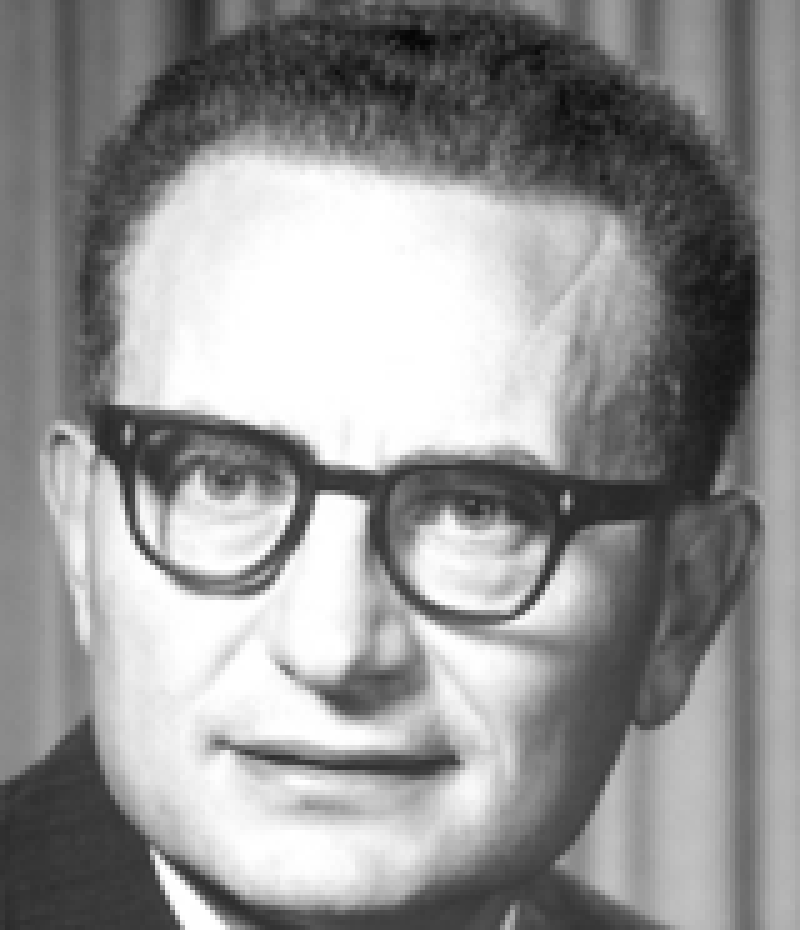The Nobel Prize-winning economist Paul Samuelson used his Newsweek column of September 1966 to make the following observation: “To prove that Wall Street is an early omen of movements still to come in GNP, commentators quote economic studies alleging that market downturns predicted four out of the last five recessions. That is an understatement. Wall Street indexes predicted nine out of the last five recessions! And its mistakes were beauties.”

|
Paul Samuelson |
This quote is the perfect rebuttal to a question that is still asked all too often: “What is the market telling me?” If you want to know the future, the answer is always the same: precisely nothing. The market is a giant voting machine that reflects current sentiment. The manner in which it has gyrated violently in 2016 suggests that Mr Market is behaving like a stroppy adolescent, prone to dramatic mood swings and door slamming.
In previous bouts of misbehaviour such as the appositely named ‘taper tantrum’ in 2013 this seemed to be driven by an unhealthy codependent relationship between markets and central banks. Markets had become addicted to easy-money policies and policymakers were complicit in providing their drug of choice. The mental balm of abundant liquidity still has markets in its grip. The new question is whether central banks have the wherewithal to continue to provide it.
Empty chamber?
In the film Dirty Harry a prone ‘punk’ with a shotgun tantalisingly within his reach is posed an existential question by the eponymous anti-hero. “Did he fire six shots or only five?” The initial reaction to the Bank of Japan’s move to cut interest rates into negative territory for new commercial bank reserves held at the central bank suggested there was no more ammunition left. The yen rallied and the Nikkei slumped – exactly the opposite of what bank governor Haruhiko Kuroda had hoped for.
The BoJ is certainly pushing the limits of policy. It has something of a track record in the field of monetary apostasy, having invented quantitative easing in March 2001 and then gone ‘all in’ with asset purchases of ¥80 trillion ($715 billion) a year in October 2014. One-third of JGBs already sit on the BoJ’s bloated balance sheet. By 2017 50% of the market is projected to be in the central bank’s hands.
As well as the three arrows of Abenomics, has Japan fired all of its monetary bullets? The answer must be ‘no’. A negative interest-rate framework allows the BoJ to cut further. There is a debate around how far central banks can push into negative territory without bank runs. At some point the erosion of savings outweighs the inconvenience of holding cash. But that is likely to be some way off. Before it is reached, policymakers may choose to call time on cash altogether. Most people under the age of 30 would scarcely notice.
Another reason that negative interest rates are supposedly the final straw is the fragility of banks in Europe and Japan. Surely, even without bank runs, banks in areas with negative policy rates must be unprofitable? That seems to have been the thinking behind the rout in bank stocks this year.
However, in the two countries that have experienced negative rates for the longest period, Denmark and Sweden, the banking system seems quite healthy. Sweden’s four biggest banks (Nordea, SEB, Svenska Handelsbanken and Swedbank) all trade above book and operate with ROEs ranging between 12% and 15%. To the extent the market dislikes banks, it is still discriminating between the good and the bad. The presence of negative rates appears immaterial.
Inflation also rises
A more substantive complaint about negative rates is that they are pushing on a string. Like QE, zero interest rate policy and everything that has gone before, they will not work. Again however, the Swedish experience might suggest otherwise. Headline consumer price inflation rose from 0.1% in December to 0.8% in January. If housing costs are stripped out, the rate is 1.6%. This has been achieved without recourse to helicopter money, debt monetization or wealth taxes, extreme monetary policy options that could be used if growth and inflation remain subdued.
The desperate measures of the Bank of Japan and the widely perceived need for further ECB action in March is being blamed on a policy mistake in the US. The world, we are told, is not ready for tighter financial conditions. Of course, Mr Market only sees ‘the world’ through his fractured lens. The US economy presents a different picture. The January headline CPI figure has risen to 1.4%. Core inflation (stripping out food and energy) is 2.2% and has remained above 1.5% since the beginning of 2014. Inflation in the services sector, which makes up almost 80% of GDP, is running at 2.5%. It seems as though the Federal Reserve has been able to conjure inflation using ‘just’ Zirp and QE while raising interest rates.
Policymakers elsewhere may need to resort to negative interest rates. There is still ammunition to be fired before getting the rotor blades turning on helicopter money. If the US and Sweden are canaries in the coalmine, Mr Market may even begin to perceive the stirrings of inflation, rather than a debt deflation death spiral. Everything that has been beaten down this year – banks, high yield, emerging markets – will bounce hard.